#hideakis hair is so fun to draw actually
Text
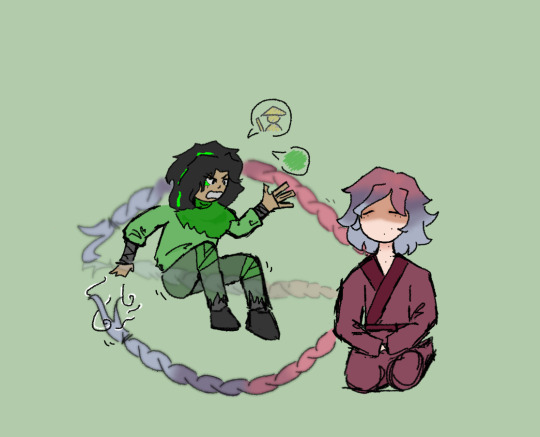
@manjirian remember the shitpost i said i would scratch out a LONG long time ago
!!guy in the purple is @manjirian’s oc!!
#yeah#if it’s not clear he’s playing jump rope with his hair lmaoo#i know it’s not long enough#idk if this is their dynamic#or if it would happen#but i thought of it and it Would Not Let Me Go#so here it is#tadaa#ninjago oc: hideaki fujimori#<- go check it out guys#hideakis hair is so fun to draw actually#i hope you don’t mind i put my own little spin on the bangs and stuff#my design for morro changes every time i draw him#i love using neon colors >>#clipping tool my lord and saviour#ninjago#lego ninjago#morro ninjago#ninjago morro#morro wu#ninjago art#my art#jellos scribbles
47 notes
·
View notes
Text
Naomi and Halle's Ambitious Anniversary
All gifts should now be posted. If you don’t see your gift, please contact a moderator right away. Thank you all for your wonderful creations and we look forward to seeing you in future rounds!
Below the cut is the compiled list of everyone’s prompts from this round of our exchange. They are organized by their submitter, so feel free to ctrl+f to find character-specific prompts. Please feel free to use them for inspiration, whether you participated in this exchange or not!
Anonymous
fanart of the wammy's kids inspired by the lyrics to curses by the crane wives
near and mello fanart inspired by the lyrics to no children by the mountain goats
L with stubble!!
A peace that highlights the parallels between Halle and Naomi, their similar motivations and opposite fates
Naomi, Raye, and Hideaki Suruga hanging out back in college
Shinigami Naomi
AU ware Naomi was a Wammy's kid and first met L and Beyond through there
What if Gelus died for Naomi instead of Misa? (Either when she was about to die in canon, much earlier, around the same time Misa needed saving, or at any other point that sounds interesting!)
Naomi's journey from deciding to leave Japan after high school to retiring from the FBI
Light, Misa, and L all on some sort of date
Misa and Kiyomi in cozy attire also on a date or just spending time together
Misa giving a human Rem and makeover, picking out clothes, painting her nails etc
Mello in a fantasy au setting with a sword
Misa being motherly towards the younger wammys kids (Matt, Near, Mello, Linda )
Misa in a vigilante au where her superpower is regeneration like Deadpool
Matt and Mello on a motorcycle
fandom-fae
misa amane portrayed as a powerful goddess/godlike deity
linda painting a portrait of misa amane
mello and near on a fluffy date in a café with like a pastel cutesy color palette/aesthetic
fem lawlight hanging out with misa in an environment that has like fun/colorful lighting
an au where light dies at the end, but instead of actually dying he wakes up again afterwards in an alternate universe where he’s a wammy’s kid before the kira case started. how does the story go from there? does he still get the death note? does the kira case even happen at all? how does he get along w the other wammy’s kids? etc etc uwu
an au where beyond didn’t die after labb, but instead survived and broke out of jail and then years later decided to involve himself in the kira case to prove to L that he needs him(B)- and yeah i also wanna see Light and Misa interact with B ghjdghjhgf
an au where misa is the first kira instead of light and she is the one with the god complex and the plans to rid the world of evil (with undertones of revenge bc yeah-) but she still made the eye deal and still has rem and light is the second kira & a huge fan of the first kira; obv light would still be himself so he wouldn’t fall in love with misa (at most in like a tsundere way) and yeah
grelleswife
Naomi riding a motorcycle down an open highway. The breeze is blowing through her hair, and a gorgeous sunset illuminates the sky behind her.
Naomi and Halle having tea at Naomi’s apartment (romantic undertones preferred)
Halle and Naomi dancing together at an elegant evening ball as part of an undercover mission. I leave their specific attire up to the artist’s discretion.
In an AU where Naomi survives, she and Halle have a one-on-one training session where she teaches the other agent capoeira. Can be romantic or platonic.
A short piece on Halle’s early days working for the SPK (her motivations for joining, first encounters with Near, and so on)
A Kiyohalle short in which Halle protects Takada from a would-be anti-Kira attacker.
chaotic-angsty-teen
Light with wings
Misa inspired by the song Teen idle by MARINA (could be a lyric comic or just a drawing of her that fits)
L in an ugly Christmas sweater drinking teafree sugar.
Hannibal nbc crossover or AU
Time-loop AU for the day L dies in canon from either L's or Light's perspective
Misa eventually gets disillusioned with Light during the timeskip
AU where Soichiro finds out Light is Kira after L's death
dillyfirestarter
Don't be a coward, join me in my crackship and draw me an L/Soichiro picture. 1.1 How would they flirt in the hotel rooms before L meets Light in person? 1.2 In the Yotsuba arc, Light catches L making a suggestive face/gesture to Soichiro. He doesn't realise it's a mutual attraction, but he's still horrified.
If that's too terrible to imagine, then I'd like to see Nu the eyeball-column shinigami as Misa's shinigami. Perhaps Misa is putting eyeliner/fake lashes around every eyeball?
Those Who Stand For Nothing Fall For Everything: if you know this story, show me what you think dapper lawyer L looks like
Depressed adult Near has far too much hair. Does he make one of the SPK brush it for him? Or does he just lay there and occasionally pick out lego from his masses of curls?
Naomi is my goddess. I wish I got to see her interact with L or the Task Force in canon. How would she fit into the team?
Alternatively: Naomi, alive and well several years after the show, has to pick up her gun once more and strap her baby to her back to go fight crime.
Alternatively: Light actually decides to assault Naomi to stop her going to the police station. Make her give him the most satisfying arse-kicking
Death Note/Code Geass crossover: What Geass would L or another character have? Would it be a help or hindrance catching Kira?
complicatedmerary
Halle and Naomi on a motorcycle adventure together
Kiyomi Takada attending her first concert as a child, reaction is up to you
Misa plays a prank on Light (gone wrong) (REAL) (we all cried).
Mikami is stuck with Takada in her apartment after the district got shut down with an unusual outage, they are forced to talk about topics other than Kira
Light Yagami has a diary that no else but him knows, what would that look like prior to his final days? Bonus points if someone got to read it, be it before or after his eventual demise
Near likes to pretend that defeating Light Yagami was satisfying to watch, and yet, he still feels like something about it wasn’t quite right, some questions still unanswered.
bring-back-beyond-birthday
Beyond Birthday and Mello hanging out
Shinigami tea party!
L and Light looking at a sunset together!
Light and L having a chance meeting or accidental relationship~? I’m a big fan of coffee shop au’s!
What do all the Whammy’s kid do when the adults are away?
Matt and Mello’s adventures once they team up!
mapsareforbraindeads
death note… but it’s alice in wonderland!
light, L, misa, and the task force get together for a movie night.
matsuda made a cake for L! is it a disaster? is it delicious? you decide!
anything with b x light x l (beyondlawlight) or any ship involving that trio.
any character’s journey through realizing that they are aromantic. ideally with a proper coming out scene.
a yagami sibling-centric fic taking inspiration from “we all need a hero” from the musical.
light and near making cookies together to surprise L, who sneaks in and tastes the cookie dough when they aren’t looking and critiques it. i actually had a dream about this once.
a beyond-centric fic that explores his thoughts during another note
izaori
LightMello as Pokemon trainers! Doesn't have to include Pokemon but if so I think Mismagius and Infernape would be cool
Naomi being badass like on her motorcycle or on the job. Action-y. The movie motorcycle slide thing would be super cool.
Holiday Ryuky :D like Ryuk in a Christmas hat or with Valentines gifts or easter bunny ears. Or saint pattys day stuff. Literally any holiday and Ryuk is celebrating it. Feel free to choose your favorite holiday!
Misa planning a big Valentines day surprise for Light. Maybe getting special chocolate, or a cute outfit, getting movie tickets. Light's reaction to it (maybe positive if it makes him look good, negative if it just interferes with his plans).
Mello after the mafia explosion and before we see him again. What happened? How did he survive? Who helped him? Maybe when he contacts Matt/Wammy's House for help.
Young L investigating the 'mysteries' of Wammy's House. For example, a 'kitchen ghost' that's actually just a squeaky cabinet that keeps opening. Or why the sharpies in a classroom keep going missing. These child mysteries must be solved!
birdlizard
matt living his best life
rem listening to misa talk about light
beyond birthday with dramatic/fun lighting
matt and mello roommate drama
L tries to do chores
rem gets herself some standards
thisworldisrotten
light playing a string instrument (violin, viola,cello, double bass, harp) in a fancy suit
light and b killing l together (bonus if it's bloody)
light and mikami being evil and ruling the world together
a third party (matsuda, soichiro, mello, oc, etc) witnessing L and Light's interactions and having no idea what they're talking about because it's like they're sharing the same brain
L wins au- L regrets executing Light
Light feeling lonely and superior to everyone else during his childhood and through the years
15 notes
·
View notes
Photo

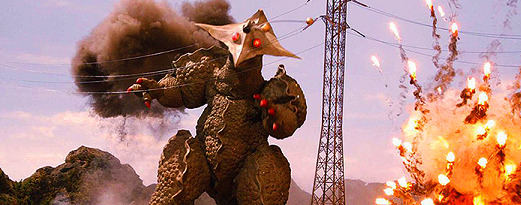
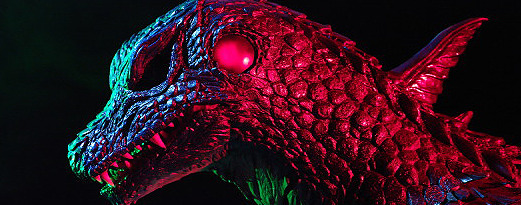


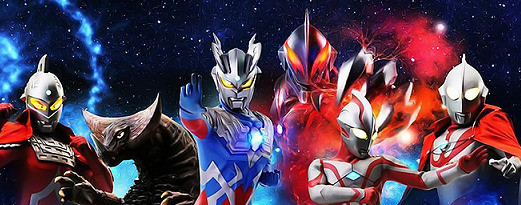
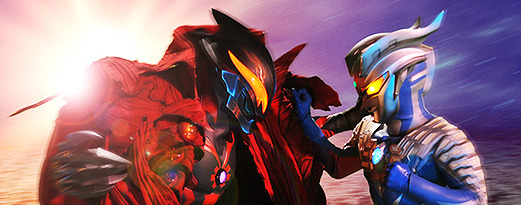
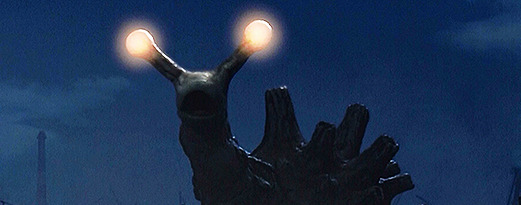
In the kaiju circles I usually run in, we tend to refer to the period between (and including) 2007 and 2012 as the “wilderness years”, i.e., a time when the output of new, original kaiju media reached a significant low. That’s not to say there wasn’t anything new – independent films like Deep Sea Monster Raiga and Geharha, the Dark and Long-Haired Monster gained attention in 2009, while the omnipresent Ultraman franchise quietly but steadily beat on against the popular current. Perhaps the perceived lack of output is not the reason we refer to these years the “wilderness” – there was almost at least one new production for each of the aforementioned years. Rather, the wildly varying quality of this period’s output is a more likely explanation. An even bigger contributing factor may be the lack of a big name franchise to anchor this period, with Godzilla having gone on self-imposed retirement in 2004, and a new Gamera franchise failing to take off after 2006’s Gamera the Brave.
In the 1960s, the presence of Toho and Daiei’s mega-franchises allowed competing studios to throw their hats into the kaiju ring – Nikkatsu offered up Gappa, the Triphibian Monster (1967), Toei introduced us to The Magic Serpent (1966), and crashing down to Earth came The X From Outer Space (1967), from Shochiku. With Godzilla and Gamera raking in mega-bucks at the box office, these alternative offerings were able to bask in reflected glory. However, between 2007 and 2012 no such big franchises existed, and while Ultraman persisted, his popularity and box office draw was the lowest it had been since the franchise was resurrected with Ultraman Tiga (1996). During Godzilla’s Millennium series (1999 to 2004), Japanese filmgoers became fatigued with the varying quality of each successive production, and eventually grew tired of giant monster action on the big screen. Gamera’s attempted resurrection in 2006 never stood a chance – the climate simply rendered it moot.
The “wilderness years” nonetheless represent something relatively unique in the history of the kaiju genre: a surprisingly high number of kaiju comedies were produced in this time. Much like the spaghetti-western in the ‘70s, perhaps kaiju filmmakers sought to keep the genre alive by introducing over-the-top comedic elements to the traditional genre structures in the search for something fresh and new. The first of the big kaiju comedies was Hitoshi Matsumoto’s Big Man Japan, released in 2007. Something of an absurdist deconstruction of the “giant hero” genre, the film features Matsumoto himself as a deadbeat loser with no friends, strained relationships with his few family members, and a lifestyle just above the poverty line – and who can transform into a giant to combat kaiju attacks. In a highly surrealistic ending – even by this film’s standards – Big Man Japan even manages to make a statement about Japan’s uneasy relationship with its superpowered ally, the United States. Acting as something not unlike a kaiju play on This is Spinal Tap!, Big Man Japan is perhaps not the most accessible kaiju comedy for Western viewers, but is certainly at least something entirely new for the genre during a time when it desperately needed exactly that. However, for every This is Spinal Tap!, there’s sure to be a Superhero Movie, or Epic Movie, or…
Minoru Kawasaki’s Monster X Strikes Back! Attack the G-8 Summit – a satirically flaccid attempt to parody the leaders of the free world – could not have come at a worse time. Resurrecting the monster Guilala from The X From Outer Space after an absence of 41 years on the screen, the film makes two tardy fundamental errors: coming along after Godzilla and Gamera were both discharged from active duty, and reviving a one-shot monster that hadn’t been seen on the big screen (in any non-stock footage cameo capacity) for four decades – even then, that was during what was practically the complete opposite of the wilderness years: the “Kaiju Boom” of the 1960s. 2008 also saw the release of Great Decisive Battle! Superior Ultraman 8 Brothers, the 20th theatrically released Ultraman movie. Featuring return appearances from characters that spanned 40 years of the franchise, the film is a very fine one, but ultimately falls into the pitfall that so many Ultraman features do: overdependence on the audience’s familiarity with the franchise’s rich history. This problem is especially highlighted by the fact that the film largely takes place in an alternate universe with equally alternate versions of otherwise familiar characters.
2009 was somewhat kinder to the kaiju genre, with a generally more favourable slew of features seeing release. Shinpei Hayashiya, responsible for the legendary fan-film Gamera 4: Truth (2003), released the second film in his Reigo/Raiga series, Deep Sea Monster Raiga. A sequel to 2005’s Reigo: The Deep Sea Monster vs. the Battleship Yamato, the film – to put it lightly – is an uneven one, and suffers from a wildly irregular tone and some flat attempts at humour. Nonetheless, Hayashiya’s adoration of the genre shines through enough to make the film at least an enjoyable one. An even more affectionate tribute to the genre shines through in the 20-minute short Geharha: The Dark and Long-Haired Monster. Featuring direct homages to the likes of Invasion of Astro-Monster (1965) and The Mysterians (1957), Geharha benefits from a brisk running time and breakneck humour, all the while being careful not to mock the genre itself, but just affectionately have fun with it. Director Kiyotaka Taguchi would – very deservedly - go on to anchor the Ultra series’ return to glory, working on the television productions Ultraman Ginga (2013), Ultraman X (2015), Ultraman Orb (2016), and their movie counterparts.
The same cannot be said for Tomoo Haraguchi’s Death Kappa (2010). Produced with noble intentions – to film a new, original kaiju film created entirely through the use of traditional tokusatsu effects techniques – Death Kappa is nothing short of a trainwreck of a movie. Much of the humour is detrimentally absurd, and some jokes commit the cardinal sin of actually making fun of the genre and techniques it claims to be paying homage to. Haraguchi’s intentions were certainly commendable, but the finished product ranks among the very worst of the kaiju genre and – somewhat dishearteningly – is a film that betrays its own modus operandi. Haraguchi’s efforts (or lack thereof) are doubly disappointing considering he previously worked on the outstanding special effects of Gamera: Guardian of the Universe (1995), and Gamera 2: Advent of Legion (1996). Aside from cameos from future Shin Godzilla directors Hideaki Anno and Shinji Higuchi, Death Kappa is ultimately a film best left forgotten about, and most likely will be.
The “wilderness years” saw the release of two further Ultraman films: 2009’s Mega Monster Battle: Ultra Galaxy Legends! The Movie, and its direct sequel Ultraman Zero: The Revenge of Belial in 2010. Both films are among the very best of the theatrical Ultra series, and thrust the franchise’s visuals lightyears forward by heavily combining traditional tokusatsu effects with substantial helpings of green-screen and CGI. While gratuitous green-screen photography can look ugly when used in excess, the vast space opera-esque lsndscapes richly brought to life in these two Ultra-films are a testament to Tsuburaya Productions’ willingness to try new things to ensure their most iconic franchise remains relevant, fresh, and most importantly, fun, without ever betraying or abandoning the core dynamics and conceits of the franchise.
Among these uneven times, however, emerges a diamond in the rough: 2009’s Demeking, the Sea Monster, a theatrical adaptation of a popular 1991 manga by Takashi Imashiro. Despite what could be argued a misleading title, Kotaro Terauchi’s film is a quietly beautiful meditation on the importance and inevitability of accepting the responsibilities that come with growing up. The sea (in actuality, space) monster of the title only appears in a magnificently shot dream sequence – something the film has received frustratingly undeserved scorn for from the wider Western kaiju community – and this is absolutely to the film’s benefit. Demeking becomes a coming-of-age subversion of the genre itself: a kaiju movie without a kaiju, or at least the literal physical appearance of one within the film’s internal world. While certainly not for the average viewer who is simply looking to enjoy a traditional kaiju romp, Demeking is a woefully underrepresented movie that stands out as the crowning jewel of a difficult period in the genre’s history.
It’s worth mentioning that these “wilderness years” also saw Heisei Godzilla special effects director Koichi Kawakita release his short film The God of Clay, while in 2009 the independent feature Daikaiju Eiga “G” saw release. All was not quiet on the Western front with the highly-secretive release of Cloverfield, while on Japanese television, Tsuburaya Productions released Ultraseven X, two seasons of Ultra Galaxy: Mega Monster Battle, and the compilation clip-show Ultraman Retsuden. 2010’s Daimajin Kanon reintroduced Daiei’s stone idol in a serialised television format, with mixed degrees of success.
The wilderness ended in 2013, which saw the seeds of the current kaiju renaissance being planted. Guillermo Del Toro’s mechs-against-monsters epic Pacific Rim paved the way for Legendary’s MonsterVerse, the Ultra franchise returned to television and begun its current successful streak with Ultraman Ginga and Neo Ultra Q, with each subsequent series proving more successful than the last. Minoru Kawasaki also released his second kaiju feature, Earth Defence Widow – but the least said about that, the better. As previously posited, these “wilderness years” can be defined not by their lack of kaiju productions, but perhaps instead by the absence of a steady ongoing franchise to anchor the period, and the inconsistent quality of the content these years did produce. However, regardless of the value of the period as a whole, the ragtag group of productions that formed the “wilderness years” kept the flame of the kaiju genre burning long enough for it to be rekindled with the widespread genre resurgence enjoyed today.
#essay#writing#kaiju#kaiju wilderness years#godzilla#ultraman#monsterverse#toku#tokusatsu#daikaiju#kaiju eiga#blog post#blog#text#guilala#demeking#big man japan#monster x strikes back#death kappa
331 notes
·
View notes